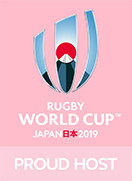
Awa Odori

This is Japan's largest bon odori (summer dance festival).
Held over four days in the center of the city of Tokushima, the Awa Odori features chants of "eraiyatcha, eraiyatcha," the flowing rhythm of flutes, drums, and shamisen, and multitudes of dancers in yukata summer kimonos.
It draws around 1.3 million persons in an average year.
Dancers participate in groups of 50 to 100 called ren, and the total number of ren is around 1,000.
Each ren consists of men, women, children, and narimono (players of small handheld percussion instruments).
Some of the more famous ren, such as ukiyo-ren and hachisuka-ren, have been in existence for more than 50 years.
Others have been newly formed by organizations such as Workplaces and schools.
There are also niwaka-ren (improvised ren) consisting of tourists who have decided to participate on the spur of the moment.
The dances are always brimming with fun and excitement.
Held over four days in the center of the city of Tokushima, the Awa Odori features chants of "eraiyatcha, eraiyatcha," the flowing rhythm of flutes, drums, and shamisen, and multitudes of dancers in yukata summer kimonos.
It draws around 1.3 million persons in an average year.
Dancers participate in groups of 50 to 100 called ren, and the total number of ren is around 1,000.
Each ren consists of men, women, children, and narimono (players of small handheld percussion instruments).
Some of the more famous ren, such as ukiyo-ren and hachisuka-ren, have been in existence for more than 50 years.
Others have been newly formed by organizations such as Workplaces and schools.
There are also niwaka-ren (improvised ren) consisting of tourists who have decided to participate on the spur of the moment.
The dances are always brimming with fun and excitement.
TM © Rugby World Cup Limited 2015. All rights reserved.